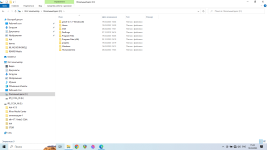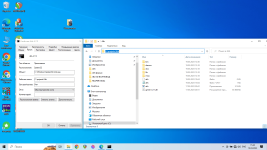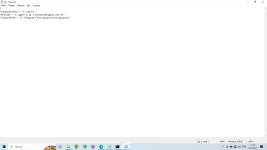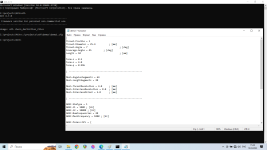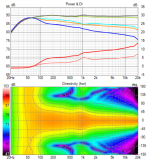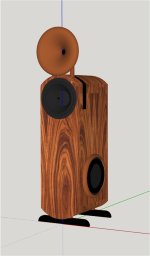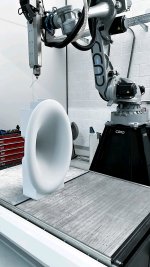NIce results.
From the picture, I assume that the waveguide is OS at the throat, gradually morphing into a square?
I tried this way back when, but found (from measurements) that it didn't work as well as a starlight oled OS with flare.
Maybe I could find those results. Possible!
From the picture, I assume that the waveguide is OS at the throat, gradually morphing into a square?
I tried this way back when, but found (from measurements) that it didn't work as well as a starlight oled OS with flare.
Maybe I could find those results. Possible!
I think the autocorrect got you there Earl, but a starlight oled sounds like a great name for a TV panel 🙂as well as a starlight oled OS
Hi!NIce results.
From the picture, I assume that the waveguide is OS at the throat, gradually morphing into a square?
I tried this way back when, but found (from measurements) that it didn't work as well as a starlight oled OS with flare.
Maybe I could find those results. Possible!
Yes you’re spot on. This is an older feature of ATH.
Morphing a rectangular shaped super formula. There is a pronounced central bump in the upper and lower mouth walls. A slight bump in the side walls too.
Cabinet shaping also helped.
30 degree horizontal polar in bold orange, 800 to 16k.
40 log points at resolution in post 11,953
1”, 10.5 degree throat.
Last edited:
Hi all. I'm new and can't run the program. I do everything according to the instructions,
but when I enter the command C:\projects\ath\demos\demo1.cfg a text file opens instead of output. Where am I wrong?
Budo appreciates any help
but when I enter the command C:\projects\ath\demos\demo1.cfg a text file opens instead of output. Where am I wrong?
Budo appreciates any help
Attachments
Hi!
Yes you’re spot on. This is an older feature of ATH.
Morphing a rectangular shaped super formula. There is a pronounced central bump in the upper and lower mouth walls. A slight bump in the side walls too.
Cabinet shaping also helped.
30 degree horizontal polar in bold orange, 800 to 16k.
40 log points at resolution in post 11,953
1”, 10.5 degree throat.
vertical at 20 off axis
Why did you use a superformular instead of the morphing to rectangle mode?Morphing a rectangular shaped super formula. There is a pronounced central bump in the upper and lower mouth walls. A slight bump in the side walls too.
I like that the walls meet very sharply, almost at 90 degree, as opposed to mabat's tritonia. How was this achieved?
I fixated on the superformula when it was first introduced to ATH. There was no scientific reason really but found the superformula able to control frequency bands a little better than a pure rectangle. How you explain that from a academic point of view I'm not sure.
Also looked interesting.
Started with the visually common QVGA rectangle - 320x240mm and morphed back to the throat.
The result is a rounded rectangle with some shaping the walls.
Just a hundred hours or so of number plugging and trying wild numbers. Then closing in on a few that looked like they would work.
A combination of GCurve.SF, Morph.AllowShrinkage, Morph.Rate
Also looked interesting.
Started with the visually common QVGA rectangle - 320x240mm and morphed back to the throat.
The result is a rounded rectangle with some shaping the walls.
Just a hundred hours or so of number plugging and trying wild numbers. Then closing in on a few that looked like they would work.
A combination of GCurve.SF, Morph.AllowShrinkage, Morph.Rate
Last edited:
Yea that and the joint I smoked just before posting.I think the autocorrect got you there Earl, but a starlight oled sounds like a great name for a TV panel 🙂
It should be "straight old OS"
Updated with 80 points, slightly smaller resolution.
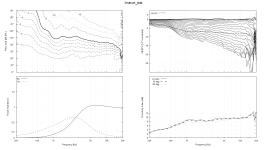

Code:
Mesh.AngularSegments = 120
Mesh.LengthSegments = 41
Mesh.CornerSegments = 5
Mesh.ThroatResolution = 2.5 ; [mm]
Mesh.MouthResolution = 7.0 ; [mm]
Mesh.InterfaceResolution = 7.0 ; [mm]
ABEC.Abscissa = 1 ; 1=log | 2=linear
ABEC.f1 = 200 ; [Hz]
ABEC.f2 = 20000 ; [Hz]
ABEC.MeshFrequency = 1000
ABEC.NumFrequencies = 80

Last edited:
Horizontal FRD into VCAD, 200-20k, 1/24 oct smoothing, resolution as per #11,971How does SP come out when you import to VCad?

I can show you the HDIR for ST260 with 8" mid in mabat's round top cabinet. The top and side vents extend the pattern control down to 100 hz or so. Response includes dual opposed 8" side subs down low in the cabinet. Its an interesting comparison. Makes we wonder what you would get if you added resistive side vents to your box.
Attachments
My initial goal was to see how good a "stock" ST-260 would be and its pretty good. There is a little overlap between the woofer and CD in the crossover to combat that mismatch as shown. It never occurred to me to tweak the waveguide but I will try that next.
You can scale down the ST-260 to reduce DI around 1kHz. One could scale it up as well if you needed greater DI, no need to design new profile if the DI slope is fine.
Its well optimized shape giving certain DI slope and "knee", how the DI ramps up initially before the straight line slope. Not sure if there are any other shapes with exact same properties. Other shapes with smooth DI would have more or less beaming, tilt on the "good smooth DI", and of course scaling up or down in size without changing the profile would change frequency where some particular DI value is reached.
Its well optimized shape giving certain DI slope and "knee", how the DI ramps up initially before the straight line slope. Not sure if there are any other shapes with exact same properties. Other shapes with smooth DI would have more or less beaming, tilt on the "good smooth DI", and of course scaling up or down in size without changing the profile would change frequency where some particular DI value is reached.
Last edited:
- Home
- Loudspeakers
- Multi-Way
- Acoustic Horn Design – The Easy Way (Ath4)
